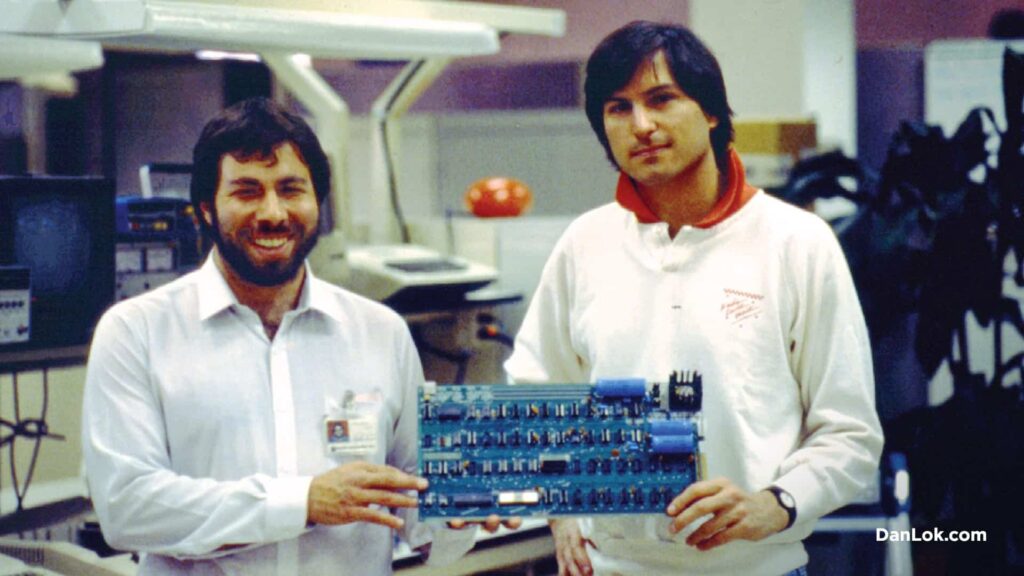You’ve been examining your spreadsheets, analyzing your revenue, and thinking deeply. Everything is now in place – your profits, your team, and your peace of mind. You are ready for the next level. But as a business owner who has never done so before, it all might seem slightly overwhelming. There is a lot to keep in mind when scaling up.
We’ve laid out a step-by-step process for how you can scale your online business – fast.
Here are some ideas for you.
The Power Of The Online Business Model (& Why It’s Faster To Scale)
Because of how powerful technology is, more and more business owners are shifting to an online model. This also lowers expenses because there is barely any overhead.
Not to mention, in this current situation, people are choosing to shop online for health purposes. In the US, e-commerce sales alone have increased by 25%.
In a traditional brick-and-mortar business, you have to take into account expenses such as rent, utilities, inventory, storage, transportation, and more. With an online business model, most of that is already taken care of for you. The biggest expenses involve how you market yourself and your business.
Scaling an online business is also drastically easier and faster than scaling a traditional business.
Since everything is online, all you need to do is leverage technology to help you scale your business. When you want to expand, you do it via online marketing instead of renting, furnishing, and stocking a new physical location.
But what if you’re currently operating as a brick-and-mortar store? You can still leverage technology to turn your business into an online business. Or at least use these tactics to take some of your business online.
This will be a game-changer for your business.
An online business model effectively reduces your expenses by at least half – saving you money and allowing you to scale with ease. As a result, online business is one of the most scalable business models to exist today.
If your online business is making consistent revenue in a market with high demand, it’s time for you to scale.
We are going to show you, step by step, how to scale your online business.
Step 1: Leverage Your Money Mindset To Create More Money
Before you take another step, you need to consider your mindset. This is the first checkpoint in learning how to scale your online business.
Do you have big goals? Are you ready for your business to scale?
Scaling your online business requires a different mindset. If you think small, your business will stay small. You need to adjust how you view your business, finances, goals, and time.
You only have so many hours in a day. If you continue to trade a limited resource – your time – to obtain more revenue, eventually you will be at a loss. Instead of trading your time for money, think of how you can use your mind to create wealth instead. The best way to do that is to leverage the second most important resource you have – money. Use the money you currently have to generate even more.
This could mean putting out more social media ads. Or you could partner up with an influencer to get them to promote your services, and pay them a fee to use their name and reputation.

In the world of business, it is necessary to spend money to make money. The only way to scale is to grow your business. In order to grow your business, you need more leads and more prospects. Instead of having a saving mindset and trying to salvage every dollar, focus on making more money. The potential prospects who are interested in your services will provide you with a much larger return on your investment.
Step 2: Find And Recruit Passionate Entrepreneurs To Scale Your Business On Autopilot
If you are looking to scale your online business fast, a team member with an employee mindset will probably not be of much help. An employee who is looking for a 9-5 job is interested in only one thing: doing the least amount of work possible and collecting their paycheck. These people have their roles when it comes to scaling a business, but the majority of your team should be passionate entrepreneurs.
Passionate entrepreneurs are less focused on their salary and more focused on what they can become. These are the kind of people who are willing to go above and beyond to help you grow your business. They understand that your success is their success as well.
To attract more entrepreneurs into your business, treat team members like entrepreneurs. Give them the incentive to perform and devote 110% of their time, energy, and work ethic.
For example, in this organization, many members of the team are trained as High Ticket Closers. High Ticket Closers are salespeople companies hire to help them close deals. The difference between High Ticket Closers and traditional salespeople is that High Ticket Closers close on a commission basis. They understand that if they don’t close, they don’t eat. This motivates them to go above and beyond what a traditional salesperson on a salary would do. The more deals these High Ticket Closers close, the more revenue they generate for the company and the more commissions they collect. As the company grows, so do they – they are able to close better deals and generate more revenue.
Provide a culture in your business that pushes team members to become passionate entrepreneurs. They’ll help you grow and succeed fast – and benefit from doing so as well. It’s a win-win situation for everyone involved.
Once you build a solid team of entrepreneurs to help scale your online business, you can move on to the next step.
Step 3: Stop Working In Your Business And Start Working On It
You’re a busy person. You may have a small team working with you, but you’ve got a lot to do as a business owner.
And that’s hindering your ability to scale.
For example, a fitness coach who is making 10K a month offering 1 on 1 training sessions probably has a system in place. His prospects could be sending him an email asking for more information. He has to reply to that email and schedule a time to talk with them. Once they’re on a call together, he talks about how he can help the prospect achieve their fitness goals. After a lengthy discussion about price and what they can expect, the 1 on 1 training begins.
Is that how you’re running your business? Are you involved with every step of the process?
The first step in scaling your business is to stop being involved in every step of your process.
You have to get out of your own way.
This business system will not allow you to scale. Let’s return to the fitness coach case. We can assume he is making 10K a month but has his day-to-day schedule already 80% full. It is next to impossible to take on the number of clients needed to scale to 20K, 50K, or even 100K.
The easiest way to solve this issue is to get some help. Hire a team you can delegate tasks to, so you as the business owner have more time to focus on growing your business. You can hire a support team to manage the emails. Then build a team of closers to talk with your prospects and convert them into clients.
Now you have the time to think about how to scale your business because you aren’t preoccupied trying to do everything yourself.

Step 4: Manage Your Expenses And Automate Tedious Processes
As your business grows, so do your expenses. To maximize your revenue and profits, automate as much as you can in your business. This could mean investing money into software that helps automate tasks so you have more time.
For example, the team members within this organization are extremely busy people. For them to send constant check-in emails would waste time and result in chaos. That’s why we have a task management system that allows them to see what tasks are done and what’s next with just a glance. This speeds up the entire process within the organization, allowing everyone to stay organized and make the most of their time.
What can you automate in your business?
You can save time by investing in software that schedules appointments for you. You could also automate your sales funnel and remarketing campaigns.
Remember that every minute is crucial. Add them up over the span of a month, and you’ll see just how much time you spend on trivial tasks.
Step 5: Focus Exclusively On High Ticket Clients To Do Less Work And Make More Money
Once you get yourself a team that allows you to focus more on running your business, it’s time to examine your offers and market positioning.
Let me ask you a question: would you prefer to work with one client and charge them $10,000, or work with 100 clients and charge them $100? If you’re looking to scale your online business, you need to think about selling high ticket offers.
That means raising the rate and standards of your service to accommodate a prospect who is willing to pay more. Because you are looking to scale your online business, time is your most important asset. You need to focus on how to maximize your time while maintaining or increasing the amount of revenue you generate. The best way to do that is to increase your prices.
“But there’s no way my clients will pay me 10X more for the service I’m charging!”
And that is true. This means there are two options that you have:
- Increase the value that you are providing and improve your market position OR
- Hand the cheaper clients over to your support staff
You don’t want to reject the prospects that want to work with you. If your prospects aren’t willing to pay the premium prices that you are charging, you can hand them over to your team members.
When Dan Lok was just starting out as an entrepreneur, he worked under his copywriting mentor, Alan. Alan was a busy man with many clients, who charged premium prices because his copywriting skill was in demand. When he encountered clients who weren’t willing to pay his prices, he handed them over to me, who charged a lower price. Instead of the customer being charged $4,000 for a sales page, they would be charged only $1,500.
By leveraging your team members, you can cater to both types of customers, without losing prospects.
Step 6: Scale Your Online Business With A Digital Community Of Like-Minded Individuals
Let’s take a minute to acknowledge where your business should be at this point. You should have:
- A solid mindset focused on thinking like a millionaire set on growth and expansion.
- A team of entrepreneurs who think big and work hard.
- The confidence to delegate everyday tasks to your team so you can focus on strategizing and thinking big.
- Automated systems that stop humans from spending their valuable time on mundane tasks that AI and computers can take care of.
- High-ticket offers and a solid plan to increase your prices and improve your market position.
So now, we are going to build a digital community you will be able to pluck clients from.
You can do this through social sites like LinkedIn or Facebook. You should create groups that people join to gain information about a problem your online business solves.
People won’t join groups that just sell products, so make sure your group offers true value.
Once you have people learning from and building a relationship with you in the group, they will be more likely to convert.
On occasion (and strategically), you should plug your products and offers. If like-minded individuals who need your solution have a relationship with you, you should see conversions. And just like that, you’ve built a community of ideal clients to pick from when you need more business.
Step 7: Create Online Courses and Programs To Cater To A Larger Audience
So now that you have a digital community, you can push your high-ticket offer. But you can also offer low-ticket online courses for those in your community who are not ready for your high ticket prices just yet.
Online courses do take time to create, but they offer an excellent source of passive income. This means you and your team need to invest some time to build and maintain them but can then focus your efforts elsewhere.
This is an especially poignant strategy if you’re looking to scale your online business without a large team.
So what kind of courses can you offer?
With the increase of internet usage lately and the explosion of DIY culture, just about any business can create a course that has demand for it. Plus, 78% of DIYers start their research process online, so you want to capture that business.
You may be concerned that teaching people about what your business does will negate the need for your offers. But that’s not the case. Your low-ticket course could also be about something adjacent to your offer – not necessarily how to do what you do.
For instance, if you’re in marketing, you may have noticed the giant uptick in demand for online content. So create a high-ticket offer that would alleviate that stress from your ideal client. Build a low-ticket offer course teaching business owners how to find reliable sources for their online content. Then push it to your group of ideal clients. If you’re really going for an awesome sales funnel, advertise the low-ticket offer, then upsell to your high-ticket offer.
And just like that, you know how to scale your online business.

The Secret System To Scale Your Online Business
Scaling your online business should not be difficult. For traditional brick-and-mortar businesses, there are many more things to take into account. However, online businesses have endless room to expand. Even if your main offer is a physical product, you can still capitalize on current digital trends to reach your ideal client and scale your online business.
So where’s your mindset now?
Do you feel ready to take on this challenge and conquer new mountains?
Are you ready to hit the 7-figure mark?
Dan can show you how he took his business online, coaching business from 6-figures to 7-figures – and how you can do the same for your business. All you need to do is attend the High Ticket Mastery™ Event.




















